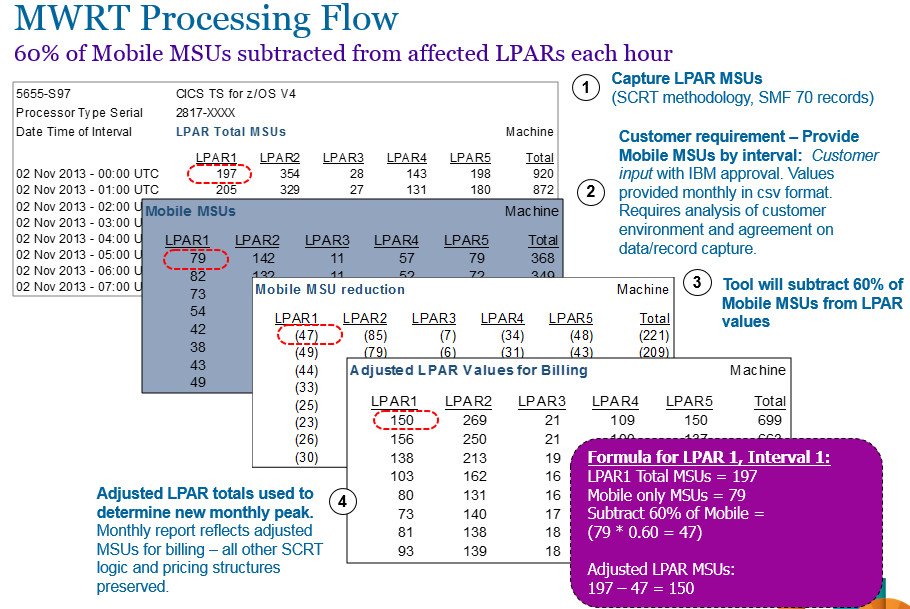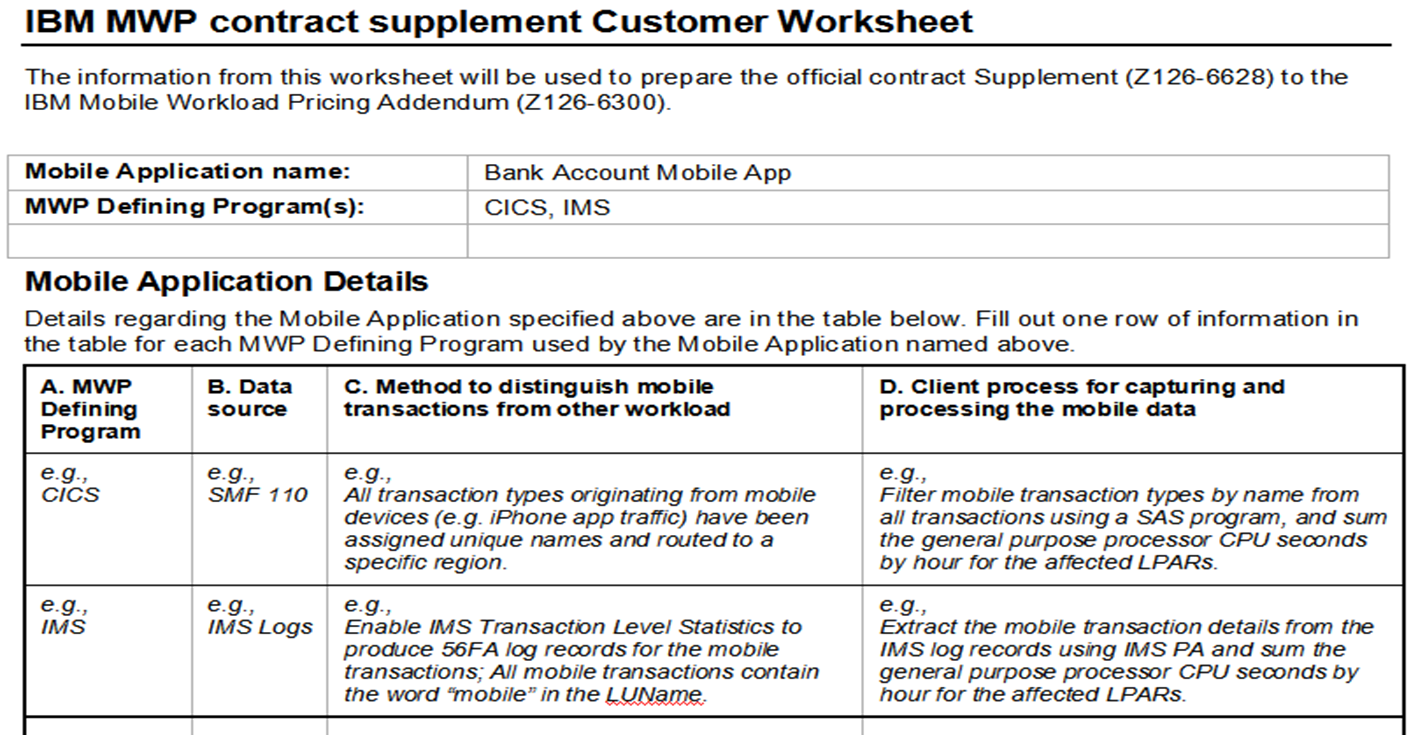|
And the latest is ...
If you are an IBM zSeries customer running a zEC13, zEC12 or zBC12 server (although actual mobile workload may be running on any zEnterprise machine including z196 and z114) utilizing z/OS Mobile Workload Pricing (MWP) eligible products - CICS, IMS, MQ, DB2 and WebSphere – did you know you could potentially reduce your z/OS peak MSUs attributable to mobile workloads by up to 60%? Sounds interesting right, so how might you go about implementing it? Firstly, lets look at the technical fundamentals:
Ok then, how does this actually translate to benefits? Per the diagram below, with the Mobile Records identified, the resultant usage data is submitted into the MWRT and up to 60% of the designated capacity is then deducted from the overall LPAR values (Refer steps 1-3): Sounds good, but how would each option actually work and on what basis do I choose one over the other? Option 1 - Use individual regions for mobile-only workloads:
To supplement either you’ll also need a tool to analyse the transaction level data. There are a number of tools (IBM and non-IBM) on the market today, such as generic tools like TAW and TDS which are capable of processing records from multiple products, or if your MWP comprises a limited product set (e.g just CICS DB2) then a product based tool such as CICS PA would suffice. And finally, you’ll need a Contract Supplement (don't forget the Supplement!) agreed with IBM outlining how the mobile CPU for each of the MWP programs will be calculated, which would be something similar to the below : If you’re not ready to go down the MWP path yet you might still want to consider what could be done now in preparation, eg.
Happy saving!
0 Comments
Leave a Reply. |
<
>
Archives
November 2023
|
|
Unravelling license complexity for Business
ACN 623 529 751 |
Privacy Policy | Terms of Use
|


